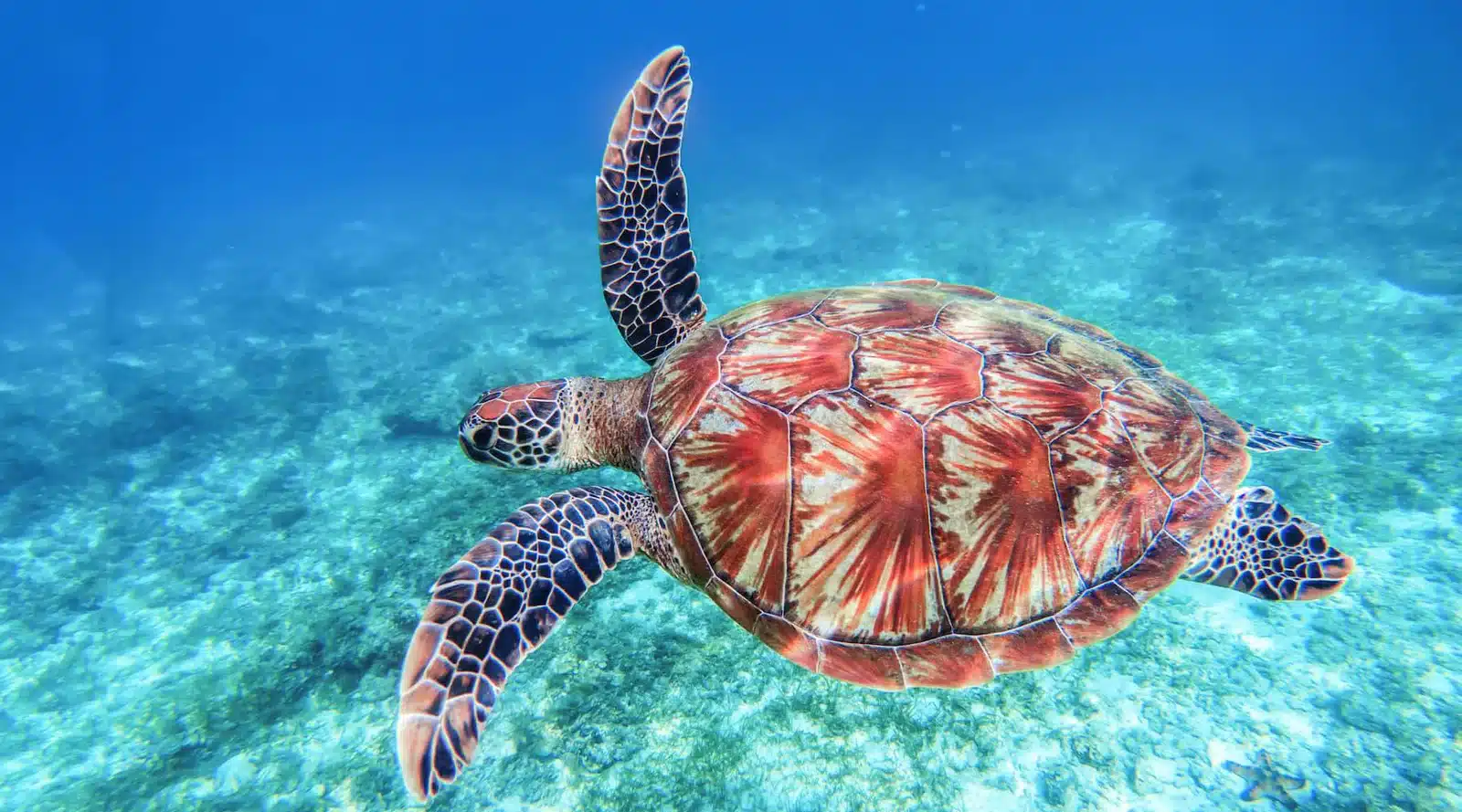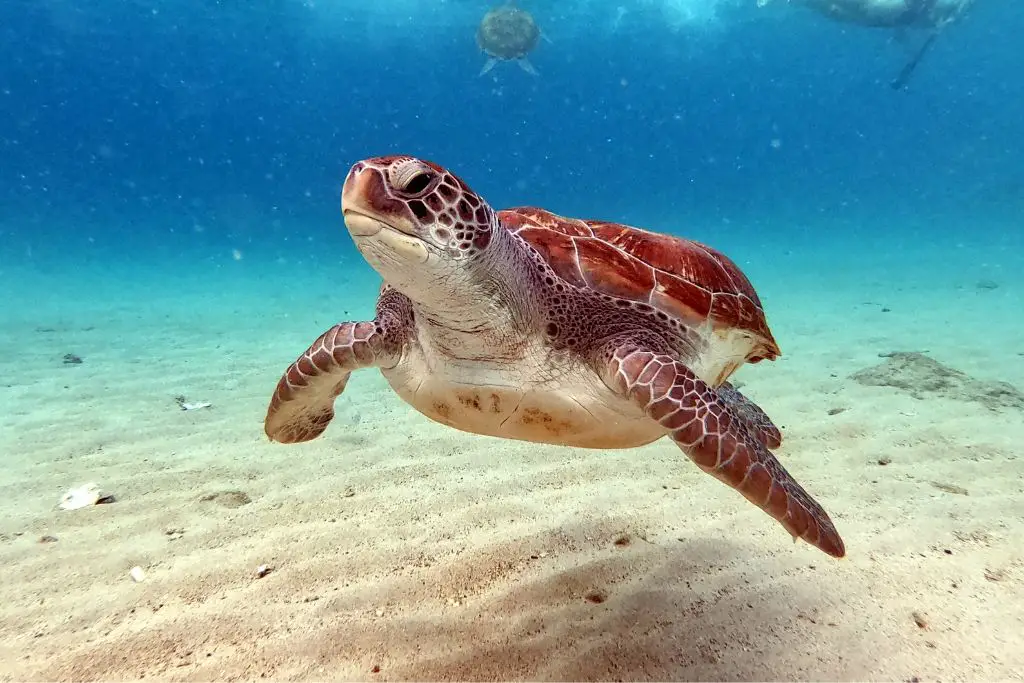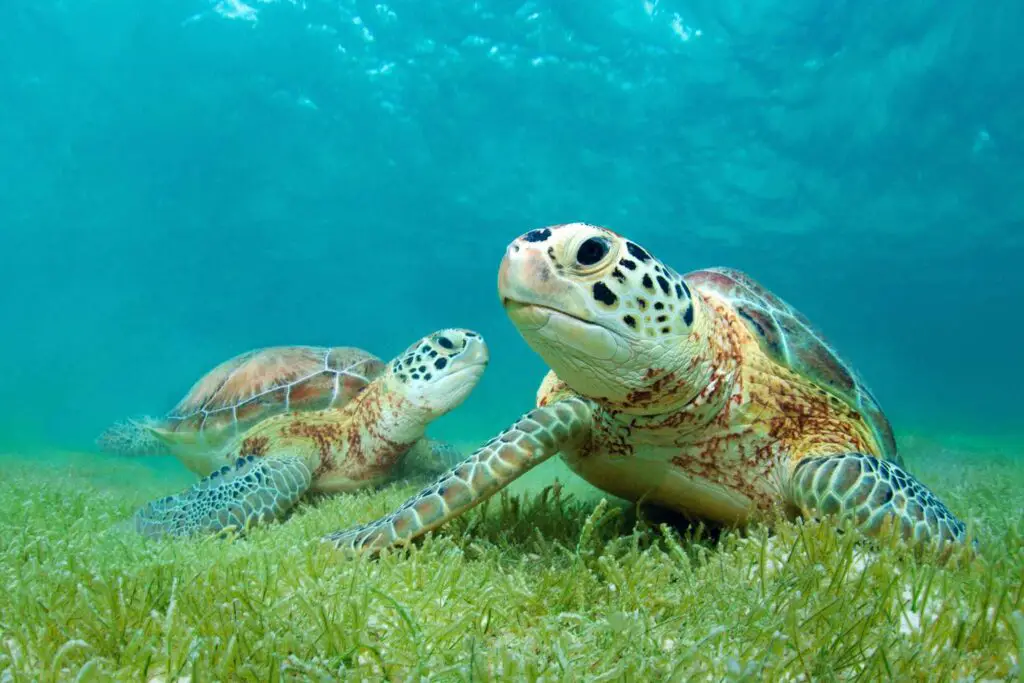Do Sea Turtles Need Air

Introduction
Do Sea Turtles Need Air: Sea turtles, magnificent creatures of the ocean, have captured the fascination of marine enthusiasts and conservationists for generations. These ancient reptiles, which have inhabited Earth’s oceans for over 100 million years, have evolved unique adaptations to life in the water. One of the most critical aspects of their survival is the need for air.
Unlike fish, which rely on gills to extract oxygen from water, sea turtles are air-breathing reptiles. This fundamental characteristic sets them apart from many other marine species. In this exploration of “Do Sea Turtles Need Air,” we delve into the intricate relationship between these remarkable creatures and the air they depend on for their survival.
Sea turtles are often seen gracefully gliding through the vast expanse of the ocean, but their captivating underwater maneuvers are only possible because they must surface periodically to breathe. Understanding the importance of this behavior sheds light on the challenges and vulnerabilities these creatures face in an ever-changing marine environment.
In the following discussion, we will delve into the physiological adaptations that enable sea turtles to extract oxygen from the air, the frequency of their surfacing, the risks they encounter while doing so, and the implications of human activities on their ability to access the air they need to survive. By gaining insight into the vital role that air plays in the lives of sea turtles, we can better appreciate the importance of their conservation and the preservation of their ocean habitats.

Why do sea turtles need air?
They need to breathe air as they do not have gills so they cannot extract oxygen directly from the water. Some species of sea turtles can hold their breath and remain underwater for an hour or more, especially if they’re resting rather than actively swimming or foraging.
Sea turtles, as remarkable aquatic reptiles, need air for several crucial reasons. First and foremost, they are not equipped with gills like fish, which extract oxygen from water. Instead, sea turtles have lungs and must come to the surface to breathe. This need for air drives them to undertake frequent journeys from the depths of the ocean to the surface, where they expose their nostrils to gulp in fresh air.
Secondly, air plays a vital role in buoyancy control for sea turtles. By adjusting the amount of air in their lungs, they can regulate their position in the water column, enabling them to ascend or descend as needed. This ability is essential for their survival, allowing them to forage for food, escape predators, and navigate their vast ocean habitats effectively.
Sea turtles utilize oxygen to fuel their metabolism. While they can slow down their metabolic rate during extended dives, they still require oxygen to maintain essential bodily functions. Without a consistent supply of air, their health and endurance would be severely compromised.
Sea turtles need air not only to breathe but also to regulate their buoyancy and sustain their metabolic activities. Their dependence on air makes them vulnerable to various threats, highlighting the importance of protecting their habitats and ensuring their access to clean, oxygen-rich environments in our oceans.
How do sea turtles get air?
Just like other reptiles, sea turtles have lungs. They have a slightly different structure than mammalian lungs, but work just as well when it comes to exchanging gases (oxygen and carbondioxide). The lungs are located right under the carapace and the vertebral column.
Sea turtles, marvels of marine adaptation, have evolved a remarkable mechanism for obtaining air while spending the majority of their lives submerged. Unlike mammals, sea turtles lack gills and rely on lungs to respire. When a sea turtle needs to replenish its oxygen supply, it ascends to the water’s surface, often exhibiting a graceful ballet of strokes.
Upon reaching the surface, the turtle’s head breaks through, revealing two nostrils that serve as its primary respiratory passage. Unlike land turtles, which cannot retract their heads, sea turtles can tuck their necks snugly against their shells. This action creates a seal, preventing water from infiltrating their airways. With a few swift, controlled inhalations, they fill their lungs to capacity.
The time spent at the surface is brief, a fleeting moment of connection between two vastly different worlds. With newly replenished oxygen reserves, the sea turtle returns to its liquid realm, navigating the depths with practiced ease. This elegant adaptation has allowed sea turtles to thrive in oceans across the globe for millions of years, embodying nature’s ingenious solutions to life in the ever-changing aquatic environment.
Do sea turtles need oxygen?
When turtles hold their breath, their heart rate slows significantly to conserve oxygen – up to nine minutes may pass between heart beats! Despite this adaptation, a stressed turtle – such as one entangled in ghost net – will deplete oxygen stores rapidly and may drown within minutes if unable to reach the surface.
Absolutely, sea turtles, like all reptiles, require oxygen to survive. They are air-breathing creatures, relying on lungs rather than gills to respire. This fundamental need for oxygen influences their behavior and physiology in fascinating ways. When submerged, sea turtles must carefully manage their oxygen levels, making each ascent to the surface a crucial act.
Unlike fish, which extract oxygen from water through gills, sea turtles must surface periodically to replenish their oxygen supply. They achieve this by breaking the water’s surface with their head, revealing two nostrils. This allows them to take in air, refilling their lungs. This process is essential for their metabolic functions, providing the necessary energy for activities like swimming, hunting, and digestion.
The ability to efficiently extract oxygen from the air and navigate the depths exemplifies the remarkable adaptation of sea turtles to their marine environment. It also underscores the critical importance of conserving their habitats, as any disruption to their access to air could have serious implications for their survival. This dependence on oxygen serves as a powerful reminder of the delicate balance that exists in the intricate web of life within our oceans.
Can sea turtles breathe on land?
Sea turtles are adapted to live in the ocean, with some unique features that help them to survive in the marine environment. As reptiles, they require air to breathe and land to lay their eggs. However, the majority of their lives are spent underwater.
Sea turtles are uniquely adapted to life in the ocean, which means they are not equipped to breathe efficiently on land. Their respiratory system is designed for extracting oxygen from the air, not from the relatively thin layer of air found near the surface of the Earth. When sea turtles come ashore, typically for nesting purposes, they undergo a remarkable shift in physiology.
While on land, sea turtles rely on stored oxygen and metabolic adaptations to sustain them during this period. They can hold their breath for extended periods, but their time on land is limited, and they must eventually return to the sea to breathe properly. This makes them vulnerable on land, especially if they are unable to complete their nesting process swiftly.
Attempting to respire on land would be an energy-intensive and ultimately futile endeavor for sea turtles. It is in the vast, buoyant expanse of the ocean that they truly thrive, their biology perfectly attuned to the underwater world they call home.
How long can sea turtles hold air?
When they are active, sea turtles must swim to the ocean surface to breathe every few minutes. When they are resting, they can remain underwater for as long as 2 hours without breathing.
Sea turtles exhibit an impressive ability to hold their breath, a skill vital for their survival in the underwater realm. Depending on the species and individual factors like age, health, and activity level, sea turtles can hold their breath for varying durations. Generally, they can remain submerged for 30 minutes to several hours.
One of the most remarkable adaptations aiding their extended breath-holding capability is their slowed metabolic rate when submerged. This allows them to conserve oxygen and minimize the build-up of harmful byproducts like carbon dioxide. Additionally, their lungs possess a greater capacity for oxygen storage than those of many other vertebrates, enhancing their underwater endurance.
Some species, like the leatherback sea turtle, are particularly adept at prolonged dives, thanks to their unique physiology. Their large size, streamlined bodies, and specialized circulatory systems contribute to their ability to explore the depths for extended periods.
However, it’s important to note that even the most experienced sea turtles must eventually return to the surface to replenish their oxygen supply. This necessity is a crucial aspect of their biology, influencing their behavior and migratory patterns. The sea turtle’s remarkable breath-holding ability is a testament to the wonders of natural adaptation, allowing them to navigate their aquatic world with grace and efficiency.
How do sea turtles breathe underwater?
Sea turtles are marvels of evolutionary adaptation, equipped to breathe efficiently in the underwater realm. Unlike fish with gills, sea turtles rely on lungs to respire. When submerged, they employ a combination of specialized anatomy and behavior to extract oxygen from the surrounding water.
Sea turtles have evolved powerful lungs, with a higher surface area for gas exchange compared to many other reptiles. They possess an ability to extract oxygen from both air and water, a rare trait among reptiles. When a sea turtle descends into the depths, it conserves oxygen by slowing its heart rate and redirecting blood flow towards vital organs.
Crucially, sea turtles employ a method called buccal pumping to facilitate respiration underwater. This involves a rhythmic movement of their throat muscles, which creates a pressure differential, allowing them to actively draw in and expel water. As seawater passes over the highly vascularized tissues within their mouth and throat, oxygen is absorbed into the bloodstream, while carbon dioxide is expelled.
This extraordinary adaptation enables sea turtles to navigate the ocean depths for extended periods. It’s a testament to the intricacies of natural selection, fine-tuning these creatures to thrive in their watery domain. The sea turtle’s ability to breathe underwater is a symphony of biological marvels, perfectly harmonized with the rhythms of the ocean.
How often do sea turtles need to come to the surface to breathe?
The frequency with which sea turtles need to come to the surface to breathe varies depending on several factors, including their species, age, activity level, and environmental conditions. Generally, sea turtles are air-breathing reptiles, and they cannot extract oxygen from the water like fish. As a result, they must surface periodically to replenish their oxygen supply.
Adult sea turtles tend to have greater lung capacity and can hold their breath for more extended periods compared to juveniles. On average, adult sea turtles can stay submerged for 4 to 7 minutes before needing to surface for air, although this can vary.
However, when actively foraging or engaged in physical exertion, sea turtles may need to surface more frequently, sometimes every few minutes, to meet their oxygen requirements. When resting or sleeping, they can extend their dive times, staying submerged for longer periods, often up to several hours.
Environmental factors such as water temperature, stress, and the presence of predators can also influence the surfacing frequency. In colder waters, sea turtles tend to surface more frequently as their metabolic rate increases in response to the lower temperature.
Why do sea turtles need to come to the surface to breathe?
Sea turtles, fascinating marine reptiles, need to come to the surface to breathe primarily because they are air-breathing animals in an underwater world. Unlike fish, which have gills to extract oxygen from water, sea turtles rely on lungs to breathe air. This fundamental adaptation dictates that they must regularly access the surface to replenish their oxygen supply.
When a sea turtle descends into the depths, its metabolism consumes the available oxygen in its lungs. As oxygen levels decrease, it triggers the need to resurface. The frequency of surfacing varies based on activity levels, age, and species. For instance, active turtles, like those foraging for food, may surface every few minutes, while resting ones can remain submerged for longer durations.
This need for periodic surfacing also serves another crucial purpose – buoyancy control. Sea turtles can adjust the amount of air in their lungs to regulate their position in the water. By releasing air, they become less buoyant and can dive deeper, while inhaling air makes them more buoyant and helps them ascend.
The necessity of surfacing for air underscores the vulnerability of sea turtles to threats like marine pollution, habitat destruction, and accidental capture in fishing gear. Preserving their access to clean, oxygen-rich environments is essential for the survival of these ancient ocean inhabitants and the health of marine ecosystems as a whole.

Conclusion
These remarkable creatures, which have navigated Earth’s oceans for millions of years, are, in fact, air-breathing reptiles. Their dependence on air is not just a biological trait; it’s a critical aspect of their survival and adaptation to life in the sea.
The need for air propels sea turtles to engage in a constant dance between the depths of the ocean and the surface, where they take in precious breaths. This behavior not only highlights their impressive physiological adaptations but also exposes them to various threats, including entanglement in fishing gear and pollution of their habitats. As human activities continue to impact the world’s oceans, it becomes increasingly crucial to recognize and mitigate these threats to ensure the survival of these ancient mariners.
Understanding the intricacies of sea turtles’ reliance on air underscores the urgency of marine conservation efforts. By safeguarding their habitats, minimizing plastic pollution, and implementing sustainable fishing practices, we can help protect these magnificent creatures and the delicate balance of marine ecosystems they contribute to.
In the grand tapestry of ocean life, sea turtles serve as a reminder of the interconnectedness of all species and the importance of preserving the natural world. Their need for air serves as a poignant reminder that the fate of these ancient travelers is inextricably tied to our stewardship of the oceans, making their conservation a matter of both ecological significance and moral responsibility.



